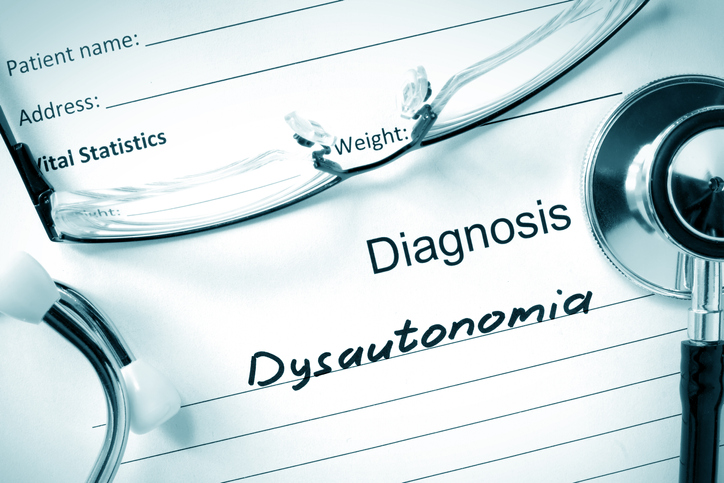Pain
Types of Dysautonomia

What is dysautonomia?
Dysautonomia — also known as autonomic dysfunction or autonomic neuropathy — refers to a group of conditions that involve dysfunction of the autonomic nervous system (ANS). It occurs when communication with the nerves in the autonomic nervous system is disrupted or impaired.
The autonomic nervous system controls involuntary functions such as heart rate, breathing, digestion, sweating, and blood pressure. When the ANS doesn’t operate properly, a host of health issues can occur, including rapid/slow pulse, high/low blood pressure, digestive problems, difficulty regulating body temperature, and loss of bladder control.
Types of dysautonomia
Dysautonomia is categorized according to the origin of the condition. There are two main categories: primary dysautonomia and secondary dysautonomia. Primary dysautonomia occurs independently of another illness. Secondary dysautonomia develops as a result of another health condition or injury. Specific types of both primary and secondary dysautonomia include, but are not limited to, the following:
- Neurocardiogenic syncope, also known as vasovagal or situational syncope, is the most common type of dysautonomia. It is usually benign and commonly affects healthy individuals. It occurs when the autonomic nervous system overreacts to a trigger, such as the sight of blood, which causes a sudden decrease in heart rate and blood pressure. This may lead to fainting. In some cases, symptoms only occur once or twice in a lifetime; in other cases, symptoms occur numerous times per day.
- Autoimmune GI dysmotility (AGID) can be idiopathic or associated with cancer elsewhere in the body. It causes dysfunction of movement of the digestive tract. Symptoms include feeling full quickly, slow digestion, nausea, vomiting, diarrhea, constipation, and involuntary weight loss.
- Postural orthostatic tachycardia syndrome (POTS) and inappropriate sinus tachycardia (IST) are common forms of cardiac dysautonomia and share similar symptoms. POTS causes the heart to beat too fast upon standing and causes symptoms of nausea, brain fog, chest pain, shortness of breath, lightheadedness, and fainting. IST is characterized by a high resting heart rate irrespective of position and an exaggerated response to physical activity.
- Orthostatic intolerance is the development of symptoms that occur when an individual is in an upright position or standing. Symptoms are often relieved by sitting or lying down. Orthostatic intolerance includes orthostatic hypotension, orthostatic hypertension, and POTS.
- Baroreflex failure involves the failure of the baroreflex mechanism that controls blood pressure. When the baroreflex mechanism fails, blood pressure and heart rate may reach high levels during periods of stress, pain or exercise. Blood pressure or heart rate may also fall to low levels during rest.
- Familial dysautonomia is an inherited type of dysautonomia. Common symptoms include decreased pain sensitivity, lack of tears, and poor regulation of body temperature.
- Multiple system atrophy typically develops after the age of 40 and is a life-threatening form of dysautonomia. It can cause heart issues, low blood pressure, loss of bladder control, and erectile dysfunction.
- Pure autonomic failure (PAF) is a progressive dysautonomia caused by an accumulation of proteins known as Lewy bodies. The most common sign is orthostatic hypotension (a sudden drop in blood pressure when standing). Symptoms include fatigue, chest pain, fainting, and dizziness. Sitting or lying down often relieves symptoms. PAF can be a precursor to other health conditions, such as Parkinson’s disease or multiple system atrophy.
- Secondary acquired dysautonomia develops as a result of another health condition, such as diabetes, autoimmune diseases, viruses, infectious diseases, inflammatory bowel disease, Parkinson’s disease, spinal cord injuries, and cancer. Secondary acquired dysautonomia can also develop due to low/high vitamin levels, certain medication use, exposure to toxins, or alcohol use.















